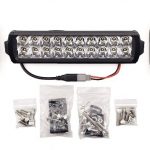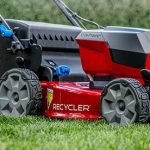
Developing permaculture, courtesy Flick user planet a.
Permaculture is not a new idea, nor is it a revolutionary idea. It is a well-founded idea that dates back almost 40 years in name at least, but many of the theories and actions that make up permaculture are good, common-sense ideals that have always been art of keeping a plot of land.
The Definition of Permaculture
Permaculture has a lot in common with sustainable landscaping, which we talked about earlier this year. It is a system of perennial landscaping or agriculture that emphasizes the use of renewable resources in concert with the local ecosystem. This means that it will create a long-lasting “permanent agriculture”.
The Bases of Permaculture
When it was defined by Australian biologists Bill Mollison and David Holmgren, permaculture was given three main tenets to guide design by:
- Care for the earth – Provide for a healthy ecosystem to allow the life systems to continue to grow and multiply.
- Care for the people – Allow for humans to access and enjoy these resources for their existence.
- Reinvest surplus – Anything left over after taking care of the first two tenets should be reinvested into the system. This includes recycling waste.
Applying Permaculture to Your Yard and Garden
While permaculture often relies on the idea of agriculture being part of the process, you can apply the ideas to your lawn and garden. You can still use edible plants in the design and function, even if you don’t want a full-blown garden. Permaculture concentrates on the interaction of all the plants in an ecosystem, not single out a articular plant for a articular benefit. Plants that complement each other are best for a permaculture yard.
To get moving in that direction, check out what you already have going in your lawn and garden. One idea behind permaculture is having a low-waste and efficient ecosystem, so yanking out current plants that could still be of use goes a bit against this. Consider adding plants that play off of the pros and cons of existing plants.
Another key element in permaculture is the use of perennial plants. Developing a perennial system around nuts and fruits that return year after year not only develops permaculture but also cuts back on the amount of effort you have to put in every year.
Is Permaculture for You?
So is permaculture a good fit for you and your situation? It certainly requires long-term vision and patience. Not to mention a different way of thinking. It’s also a bit iffy depending on hardiness zones – cooler zones are harder to create permaculture in, though it’s not impossible.
If you want to move forward with turning your lawn and garden into a permaculture environment, we encourage you to do further research and reading on the subject. It’s not something we can cover completely in a single blog – or, for that matter, a series of blogs – and requires some thorough preparation. In the region, folks like Wayne Weiseman have workshops, and are available for questions. He also has an available book that can help you further on the path to permaculture.
LawnEQ is a trusted source for genuine OEM Parts- Shop for the part you need from your favorite manufacturers such as Landpride, Toro, and more today on our OEM Parts Lookup Tool!






